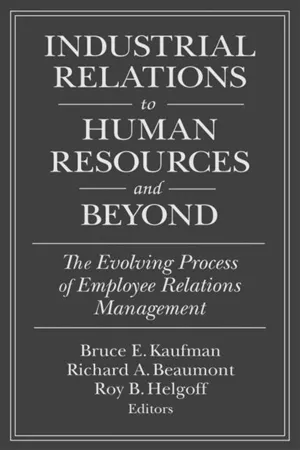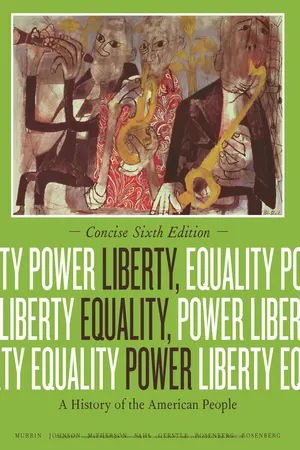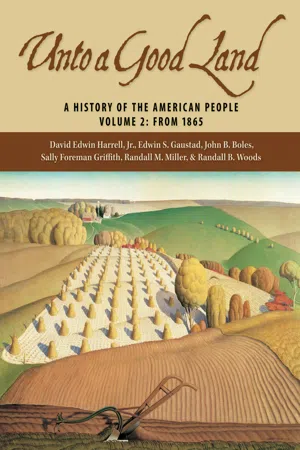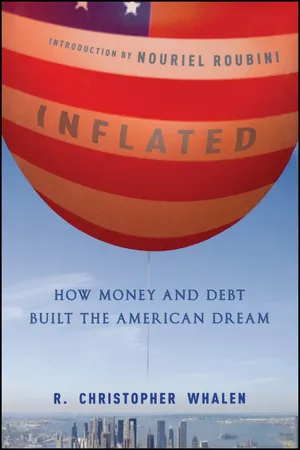History
The Roaring 20s
The Roaring 20s refers to the decade of the 1920s, known for its economic prosperity, cultural dynamism, and social change in the United States. It was characterized by a booming economy, technological advancements, the rise of consumer culture, and significant shifts in social norms, particularly with regard to women's rights and the arts. The era also saw the emergence of jazz music and the Harlem Renaissance.
Written by Perlego with AI-assistance
Related key terms
1 of 5
6 Key excerpts on "The Roaring 20s"
- eBook - ePub
Industrial Relations to Human Resources and Beyond: The Evolving Process of Employee Relations Management
The Evolving Process of Employee Relations Management
- Bruce E. Kaufman, Richard A. Beaumont, Roy B. Helfgott(Authors)
- 2016(Publication Date)
- Routledge(Publisher)
2 The United States in the 1920s Breaking with European TraditionsRoy B. HelfgottDOI: 10.4324/9781315498331-3The Roaring Twenties: Jazz, Prohibition, Laissez-Faire, and “Normalcy”
It was the Roaring Twenties, the Jazz Age. The decade began in 1920 on an ominous note with a bomb explosion on Wall Street that killed 30 people and injured 100, but things settled down after that. America had returned to “normalcy” and was keeping cool with Coolidge, yet people craved excitement. The Census of 1920 revealed that for the first time, the United States was an urban nation, and half the population was first or second generation. People were still moving west—California’s population increased by two thirds during the decade, making it almost equal to that of Texas. The most populous states remained New York, Pennsylvania, Illinois, and Ohio, and the northeast quadrant continued to dominate the nation’s manufacturing and, indeed, its total economy.In politics, the Republican Party, devoted to laissez-faire, was in control throughout the decade. Disillusioned with the results of the First World War and Wilson’s failure at Versailles, the nation in 1920 elected the Republican ticket of Warren Harding and Calvin Coolidge by seven million votes over the Democratic slate of James Cox and Franklin Roosevelt. The Teapot Dome Scandal rocked the new administration, but President Harding conveniently died and was succeeded by the impeccably honest Calvin Coolidge. In 1924, a third party appeared on the scene when a coalition of farmer groups, liberals from both major parties, and the Socialists supported Senator Robert La Follette (Republican, Wisconsin) on the Progressive ticket, but Coolidge garnered four and a half million votes more than La Follette and Democrat John W. Davis combined. In 1928, Republican Herbert Hoover won by a tidy six million votes over the Democrats’ “happy warrior,” Al Smith of New York, who even lost some southern states because he was Catholic. Not all was calm in the decade as passions were inflamed by the Sacco-Vanzetti case, in which two Italian-immigrant anarchists in Massachusetts were convicted of murder and subsequently executed. - eBook - ePub
- Thomas S. Kidd(Author)
- 2019(Publication Date)
- B&H Academic(Publisher)
21
The Roaring Twenties
F or Americans in the 1920s, it seemed that good times had come to stay. The horrors of World War I were behind them, as were the interminable squabbles over the League of Nations. Calvin Coolidge’s presidency inaugurated six years of unprecedented prosperity, and even the embarrassing scandals of the Harding administration were fading into the past. Of course, the good times of the 1920s could not obscure ongoing tensions related to race and economic classes in America. And no one could have foreseen just how hard America would fall after its decade of excess.The 1920s were marked by soaring industrial output and household incomes. This meant that more Americans could purchase the new appliances and industrial goods of the era, such as vacuum cleaners, washing machines, and automobiles. More Americans also had disposable income to spend on entertainment, including radios for the home or going to the movies. The 1920s were perhaps the key decade when American culture became consumed with popular entertainment, a trend that still endures today.One of the greatest stars of the “silent era” of moviemaking was Mary Pickford. Pickford emerged in the 1910s, usually portraying independent-minded and even rebellious women. By the end of World War I, Pickford was making sometimes millions of dollars a year and conspicuously displayed her wealth with fancy cars and clothes. In 1919, she cofounded United Artists with other movie titans, including the actors Charlie Chaplin and Douglas Fairbanks. By then she had become arguably the most powerful woman in the history of the movie business. She would divorce her first husband and marry Fairbanks in 1920. In the past a divorce might have severely damaged a woman’s reputation, but for Pickford and other media celebrities, such scandals seemed only to add to the fascination they generated.Women and Family
Figure 21.1. - No longer available |Learn more
Liberty, Equality, Power
A History of the American People, Concise Edition
- John Murrin, Paul Johnson, James McPherson, Alice Fahs(Authors)
- 2013(Publication Date)
- Cengage Learning EMEA(Publisher)
C H A P T E R 24 the 1920 s PROSPERITY A Consumer Society A People ’ s Capitalism The Rise of Advertising and Mass Marketing Changing Attitudes toward Marriage and Sexuality An Age of Celebrity Celebrating a Business Civilization Industrial Workers Women and Work The Women ’ s Movement Adrift THE POLITICS OF BUSINESS Harding and the Politics of Personal Gain Coolidge and Laissez-Faire Politics Hoover and the Politics of Associationalism The Politics of Business Abroad FARMERS, SMALL-TOWN PROTESTANTS, AND MORAL TRADITIONALISTS Agricultural Depression and Cultural Dislocation Prohibition The Ku Klux Klan Immigration Restriction Fundamentalism versus Liberal Protestantism The Scopes Trial ETHNIC AND RACIAL COMMUNITIES European American Ethnics African Americans The Harlem Renaissance Mexican Americans THE “ LOST GENERATION ” AND DISILLUSIONED INTELLECTUALS Democracy on the Defensive T o many Americans, the 1920s was a decade of fun rather than reform, of good times rather than high ideals. It was, in the words of novelist F. Scott Fitzgerald, the “ Jazz Age, ” a time when the quest for personal gratification seemed to replace the quest for public welfare. Despite President Warren G. Harding ’ s call for a “ return to normalcy, ” America seemed to be rushing headlong into the future. The word modern began appearing everywhere, and, although it was rarely defined, it connoted certain beliefs: that science was a better guide to life than religion; that people should be free to choose their own lifestyles; that sex should be a source of pleasure for women as well as men; that women and minorities should be equal to white men and enjoy the same rights. Many Americans, however, reaffirmed their belief that God ’ s word transcended science; that people should obey the moral code set forth in the Bible; that women were not equal to men; and that blacks, Mexicans, and eastern European immigrants were inferior to Anglo-Saxon whites. - eBook - ePub
Unto a Good Land
A History of the American People, Volume 2: From 1865
- David Edwin Harrell, Edwin S. Gaustad, John B. Boles, Sally Foreman Griffith(Authors)
- 2005(Publication Date)
- Eerdmans(Publisher)
26An Exhilarating Decade
American Life in the 1920s
Chapter 26 at a Glance A Decade of Relative Prosperity Welfare Capitalism and the Decline of Unionism The Consumer Boom Gathers Steam Americans on the Road and in the Air A Leisure Society Winds of Change The New Science The Literature of Revolt The New Morality and the New Woman The “New Negro” Conservative Backlash Religious Diversity and Confrontation Nativist Fears and Immigration Restrictions The Case against Foreigners The Ku Klux Klan Defines “Pure Americanism” The Failure of Prohibition The Spread of Organized Crime High Republican Politics The Election of 1920 Harding and the Return to “Normalcy” Calvin Coolidge Rides the Boom The Coolidge Boom The Election of 1928 The Great Engineer at the Wheel Boom and Bust in the Stock Market Conclusion: A Decade of Prosperity and Self-AnalysisM ONTHS BEFORE THE landslide victory of Republican Warren G. Harding in 1920, it was clear that the electorate’s mood had changed and that the progressive political coalition had collapsed. Politically, the nation veered to the right in the 1920s, electing a sequence of Republican presidents. Progressivism did not vanish, and many of the political changes wrought in the preceding decades remained in place; the federal government, particularly the executive branch, continued to grow in size and prestige. Progressives remained a powerful force in Congress, and the last of the decade’s Republican presidents, Herbert Hoover, was the leader of the reforming side of his party. Nonetheless, the prevailing political sense of the twenties was that the government should act as cheerleader, and perhaps coach, to the nation’s successful business team, but should not attempt to be a referee. The Republican presidents claimed credit for sowing the decade’s prosperity, but after 1929 Hoover had to reap the economic whirlwind.A long boom began in 1922, producing a new surge of consumerism and euphoric optimism. Exhausted by years of crusades for reform culminating in the bitter treaty debate, most Americans opted for getting on with the business of living; satisfied consumers formed the majority that turned the reins of government back to conservative Republicans. - eBook - PDF
Into One's Own
From Youth to Adulthood in the United States, 1920-1975
- John Modell(Author)
- 2023(Publication Date)
- University of California Press(Publisher)
3 MODERN YOUTH: THE 1920s CULTURAL INNOVATION That the 1920s was not a decade of unalloyed prosperity as myth proposes should not blind us to the pervasiveness of cul- tural themes reflecting a sense of growing plenty that fed and was fed by a focus on the post-Victorian sense of individualized satisfaction. If some elements of the consumer economy lagged, many evolved rapidly. 1 New expectations and elements of a re- vised organization of the youthful life course emerged from an enlarging and increasingly self-confident middle class, ineluc- tably intertwined. In the 1920s, the United States moved a long way toward reducing the enormous heterogeneity that had been created by the headlong development of an urban nation and had for half a century focused the nation's cultural and political energies. Immigration, to take the most obvious example, severely con- stricted by the Great War, was now sharply reduced by statute. The proportions of the foreign-born who were passing through their childbearing years declined sharply, not compensated for by a comparable increase in second-generation "ethnic" youth. Emigration and death, in addition to cultural adaptation, both consciously foisted and unplanned, worked their effects on the foreign-born community. As the "second generation" of the last great stream of immigration grew up in the 1920s, the once- acute sense that heterogeneity was a "problem" for American democracy began to fade. Evidences of ethnic and cultural dis- continuities, to be sure, were still numerous; but a sense of gradual assimilation had begun to overwhelm more conflictual imagery. The twenties began with a sharp depression, as overoptimis- tic entrepreneurs failed to anticipate the degree of retardation 67 68 Modem Youth: The 1920s the changeover to a peacetime economy would entail, and pre- cipitated a sharp depression. - No longer available |Learn more
Inflated
How Money and Debt Built the American Dream
- R. Christopher Whalen(Author)
- 2010(Publication Date)
- Wiley(Publisher)
Concerns about the rise of radical political groups and even the threat of revolutionary uprisings in Europe made Americans turn inward and unite against perceived domestic threats. The so-called “Red Scare” of 1919–1920, caused by the collapse of many industries due to the economic slump after the war, was comprised mostly of ineffectual strikes by workers seeking to regain buying power lost during years of stiff inflation and austerity at home. Fears of anarchists, communists, and immigrants of all persuasions were rife in the country as the election of 1920 approached. The police strike in Boston in the fall of 1919, when then-governor Calvin Coolidge used state militia to break the labor action and restore order to the city, illustrated the frustration and despair felt by many Americans at the war’s end. Coolidge fired the striking officers and broke the union by hiring returning soldiers from the war as replacements. Overnight this tough action made Coolidge a national figure.A New Era of Debt and InvestingThe Roaring Twenties is presented as a time of innovation and rising expectations in America, a time that witnessed an increase in production and productivity that lessened the need for skilled labor to produce goods. The age was symbolized by industrialists such as Henry Ford, who was widely seen as a revolutionary figure who cared for the common man, even though the truth is far less clear cut.26 In the same way that the story of Ford is more complex than the distilled, officially endorsed versions of the Henry Ford narrative suggest today, the 1920s was a period of extremes. Equal to the changes observed in technology and industry during this period was the evolution of public mores regarding the use of money and debt.Also significant was the growing willingness of government agencies to manipulate markets in order purportedly to manage the outcome—and all to no effect, interestingly enough. Friedman and Schwartz called the 1920s the “High Tide” for the Federal Reserve System and note that the new central bank immediately embarked upon an exercise in central planning via monetary policy. While the inhabitants of the Federal Reserve System may have believed that they were the “guiding hand” of the American economy, during this crucial decade in American history, the central bank seemed to have little or no effect compared with the massive changes underway in society. Factors such as the electrification of the United States, the growth in the use of consumer credit and the growing acceptance of the use of debt to finance all manner of economic activity, seem to be far more significant factors than the actions taken or not taken by the central bank.
Index pages curate the most relevant extracts from our library of academic textbooks. They’ve been created using an in-house natural language model (NLM), each adding context and meaning to key research topics.





